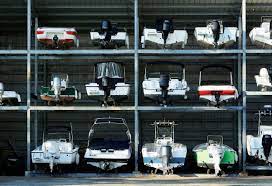Maintaining your boat during the winter months may be a struggle, especially if you’re a new boat owner. However, this kind of upkeep is necessary so certain parts of the boat don’t get destroyed. Keep reading to find out how to winterize your boat, courtesy of PDX Auto Storage.
- Change the Engine Oil
The last thing you want is old oil sitting in your engine for a long time. What happens is that acids that are in the oil can corrode engine parts while the boat is stored. This means that it is wise to put on a fresh and clean supply before leaving it. Be sure when you do this, warm up the engine and get out as much oil as possible before replacing it.
- Be Sure to Fog Your Engine
Making sure your engine is fogged is a crucial aspect of winterizing your boat. To do this, what you need to do is spray a protective coating of oil over the internal engine parts. This helps protect them from moisture so you can avoid any corrosion on the parts.
- Be Sure to Get Rid of Water from Your Engine
A lot of the newer marine engines use an enclosed cooling system. With these, there is a small tank on the top of the engine that uses a combination of fresh water and coolant. This fresh water is circulated through the engine and through a heat exchanger. The fresh water then absorbs the heat of the engine.
Do NOT make the mistake of getting water in your engine. This is because when water freezes, it has the power to mess up engine components. To effectively winterize your boat, this means you’ll need to get rid of water from the engine. It doesn’t matter what type of engine you have. To do this, you should follow your engine owner’s manual when taking this step and ask for extra advice from PDX Auto Storage if need be. Another effective method for winterizing raw water-cooled systems is to run the engine and pump antifreeze into the block. Click here to read more.
4. Add Fuel Stabilizer
Draining the fuel from an engine alone isn’t enough to make sure the engine won’t erode during the winter. Did you know that there is always some fuel in the tank, even when it’s technically empty. You want to fill the tank with fresh fuel and provide fuel stabilizer to it. This will help prevent the fuel from deteriorating, which will mess up your boat.
5. Be Sure that the Boat Is Thoroughly Cleaned
After handling the engine and its components, you need to move on to the net level of winterizing a boat. You must get in there and be sure to clean your boat before you leave it for the winter. This is because any dirt or stains may worsen if they’re left for several months. This means you should clean everything from the seats to the flooring, to the trim.
6. Go Ahead and Replace Your Gear Oil
There is more work than just changing your oil in your engine. You must replace the gear oil. Simply drain the old oil out of the compartment and replace it with a fresh supply. This is a crucial step in winterizing your boat because the new gear oil will help protect your transmission from moisture and corrosion.
7. Lubricate Your Grease Fittings
Finally, it is good to know that rust and corrosion are a huge threat to many parts of your boat, especially its grease fittings. This means that if you use a high-quality brand of marine lubricant to coat them, that should protect them over the winter months. If you can’t find your boat’s grease fittings, look at your owner’s manual or ask at PDX Auto Storage for some advice.
To find out how else you can winterize your boat, talk to the experts at PDX Auto Storage. We can help you store your boat as well as give you additional tips on maintaining your boat during the winter. Contact us by phone or on their website here.
